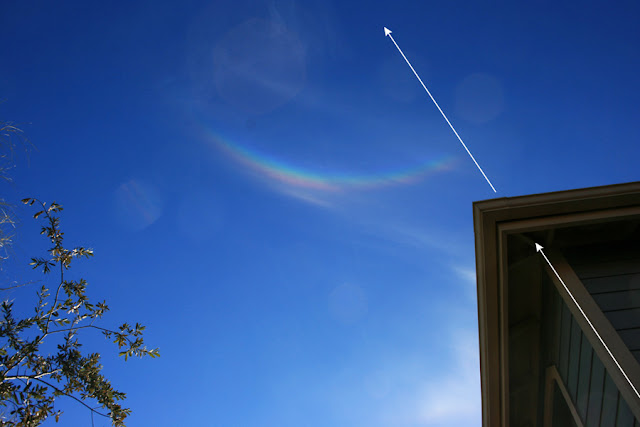Yesterday, my son and I returned to Red Rocks Canyon, NV to conquer the 4-pitch route called "Big Bad Wolf". I may also have conquered my big wall, multi-pitch anxiety. He wanted to lead his first 4-pitch route and I wanted mostly to not hold him back.
 |
| Pitches 1-3 of Big Bad Wolf, Red Rocks Canyon, NV |
The total distance vertically is 250 feet and my son described it as his most challenging lead climb yet. The first pitch is rated 5.9 (I'd done two 5.8s at Red Rocks the previous week). Pitches 2 and 3 are 5.8; and pitch 4 a 5.0. In free climbing, you use the equipment to catch a fall and not to assist your ascent. I'm guilty of grabbing one anchor that I was trying to remove, so technically, I did not complete the route as a pure free climb, but I think any 61-and-a-half-year-old trying to keep up with an 18-year-old Gumby is allowed to pre-empt one fall. In fairness to myself, I might succeed on a second try, because I'd know the route and use less energy getting to the crux, and then have more strength to work out the necessary maneuver.
This photo shows the entire first pitch with my son out of sight at the top setting up the anchor to support my climb. It is these moments when he sets up the anchor that I have a little down time and can take pictures.
 |
| Pitch 1 waiting for me to follow the lead. |
3rd is a shot over my shoulder at the first belay station. There's a large flake that is the crest that obscures most of the first pitch. Just behind the flake you see our distant water bottles at the base of the climb.
 |
| The view over my shoulder at belay station 1 |
After pitch 2, I took a selfie. Pitch 2 is more of a slab, but there was a point where I thought I would fall. My son said I let out a "power yell" but according to him, I didn't put weight on the rope. I didn't grab any anchors either, so it was a clean free climb.
 |
| Selfie at belay station 2 |
After my son finished pitch 3, I snapped a few pictures of the jagged wall to the left and scenic vista to the right. I also saw a fragment of desert varnish that looked like a horse. Still, I did not look down. (All my down shots while on the wall were taken blindly over my shoulder.)
 |
| View left of belay station 2 |
 |
| View right of belay station 2 |
 |
| Desert varnish at belay station 2, looking like a horse |
Pitch 3 was the most enjoyable in that it started with a confidence building slab that reduced the feeling of being exposed to open air and ended with a wall that required some enjoyable effort and strategy. While my son setup the 4th belay, we were visited by bird -- a nice reminder of where we were, and a reminder to enjoy the moment. I started looking down.
 |
| Belay station 3, view left |
 |
| A bird visiting me at belay station 3 |
 |
| Same bird |
 |
| View right at belay station 3 |
Pitch 4 was an easy 30-foot scramble, but after the previous pitches and the January cold, our legs suffering the "sewing machine leg" effect, it's best to go through all the motions: set up anchor, belay the first climber, place gear, and setup the last anchor, and follow safely to the top.
 |
| View from the top of pitch 4 |
 |
| The leader collecting the rope for the descent |
While I've compared the joy of a well executed climbing move to a flying dream, I'd compare climbing a multi-pitch route to the closest any of us will get to going to the moon. Once you start, you can't bail out quickly. It's safe but you have to go through all the best practices, the equipment check, the careful setups at each belay station, the standard communication commands, the focus, the safety checks, taking turns, and repeat. Doing this, we covered 250 feet in about 3-4 hours. It was maybe a half hour scramble to get down, plus time for pictures.
 |
| Ghostly erosion on the walk-off descent |
 |
| More ghostlies on the walk-off |
jg (Jan. 5, 2024)





































